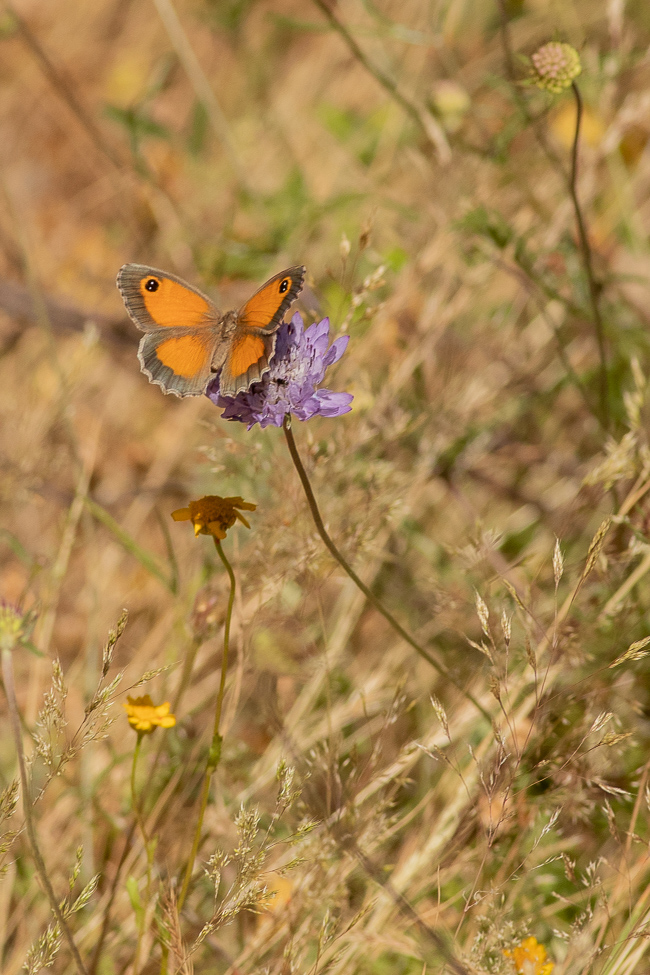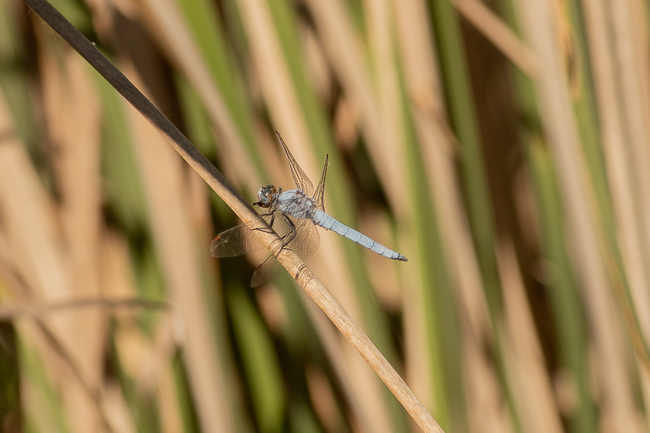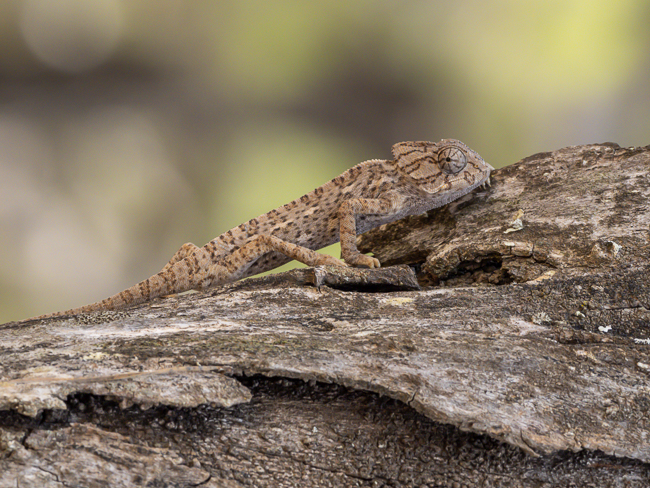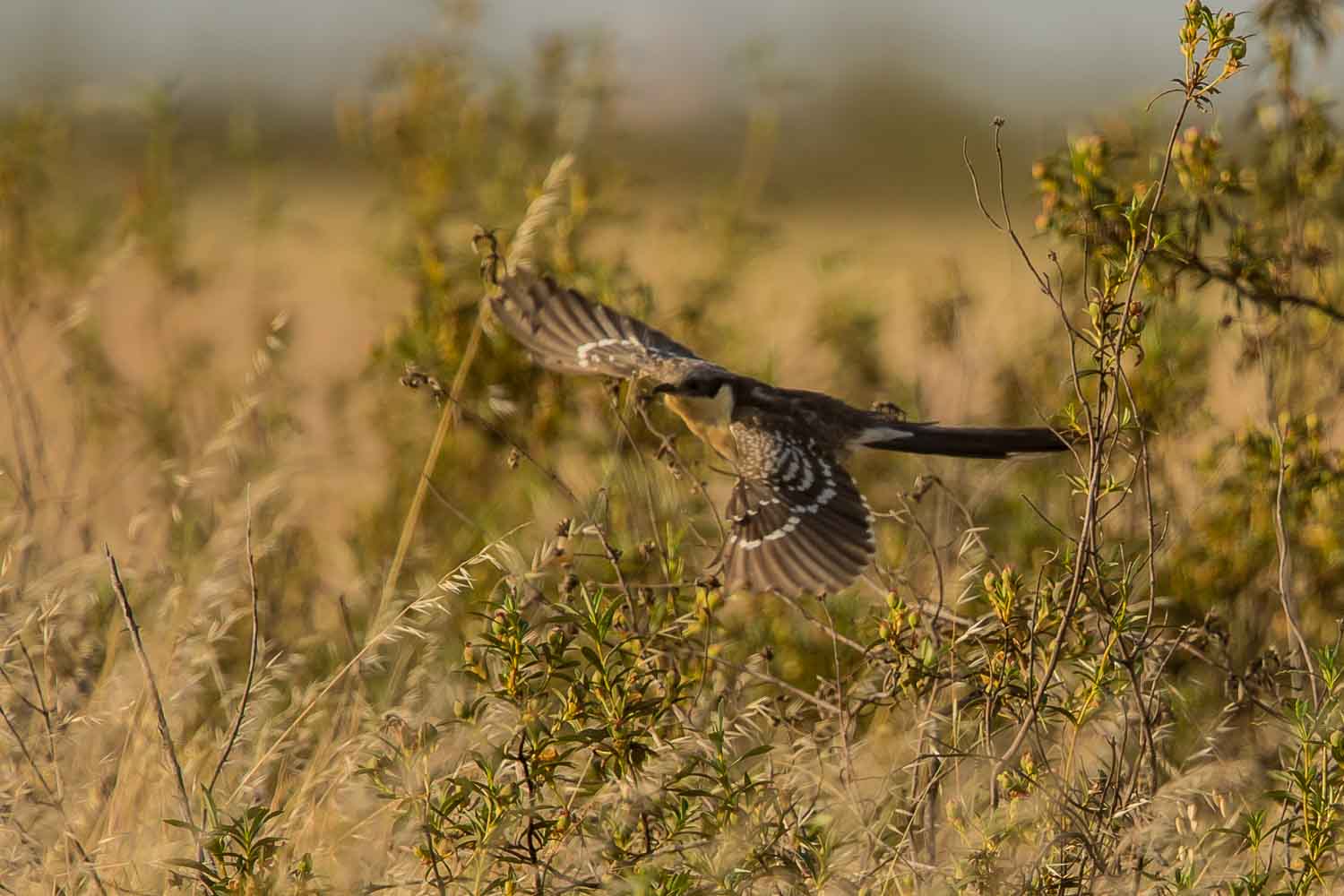
It seems like only yesterday that we were saying “Até logo” to the last of the bird species on their way south on their Autumn migration, so it’ll surprise you to be told that the first species has already returned north!
The Great Spotted Cuckoo, (Clamator glandarius), is a bird that few people outside the birding fraternity either notice or care about, but it has returned north again and is a spectacular individual, both in looks and behavior. For its migration pattern alone I make no bones about bringing it to a wider audience.
Its call is a harsh and loud cackle heard only during the breeding season, characteristically restricted to ten weeks or so from mid-February to the end of April, though there are records of European individuals breeding twice during the year, once in the Spring in Europe and then again in the Sahel during the Autumn. During the breeding period it is not a particularly difficult bird to see, but at other times of the year, even when present, it is much more secretive, and one can be forgiven for thinking it completely absent.
The core body is approximately the size of a Blackbird and both adults and juveniles are long-tailed with grey, spotted, wings, a white belly and fawn neck and chin, but whereas the adult has a lilac cap and crest, juveniles have a black one as well as sporting a brown panel in the outer wing and a red surround to the eye.

Juvenile & Adult Great Spotted Cuckoo
It is an insect-eater, specializing in caterpillars and focusing in particular upon long-haired caterpillars which are often toxic and therefore untouched by other insect-eaters. It deals with the toxicity by knocking and scraping off the hairs on a perch before consumption. Mating is a particularly interesting spectacle as this can only take place when the male offers the female a caterpillar offering as in this picture.
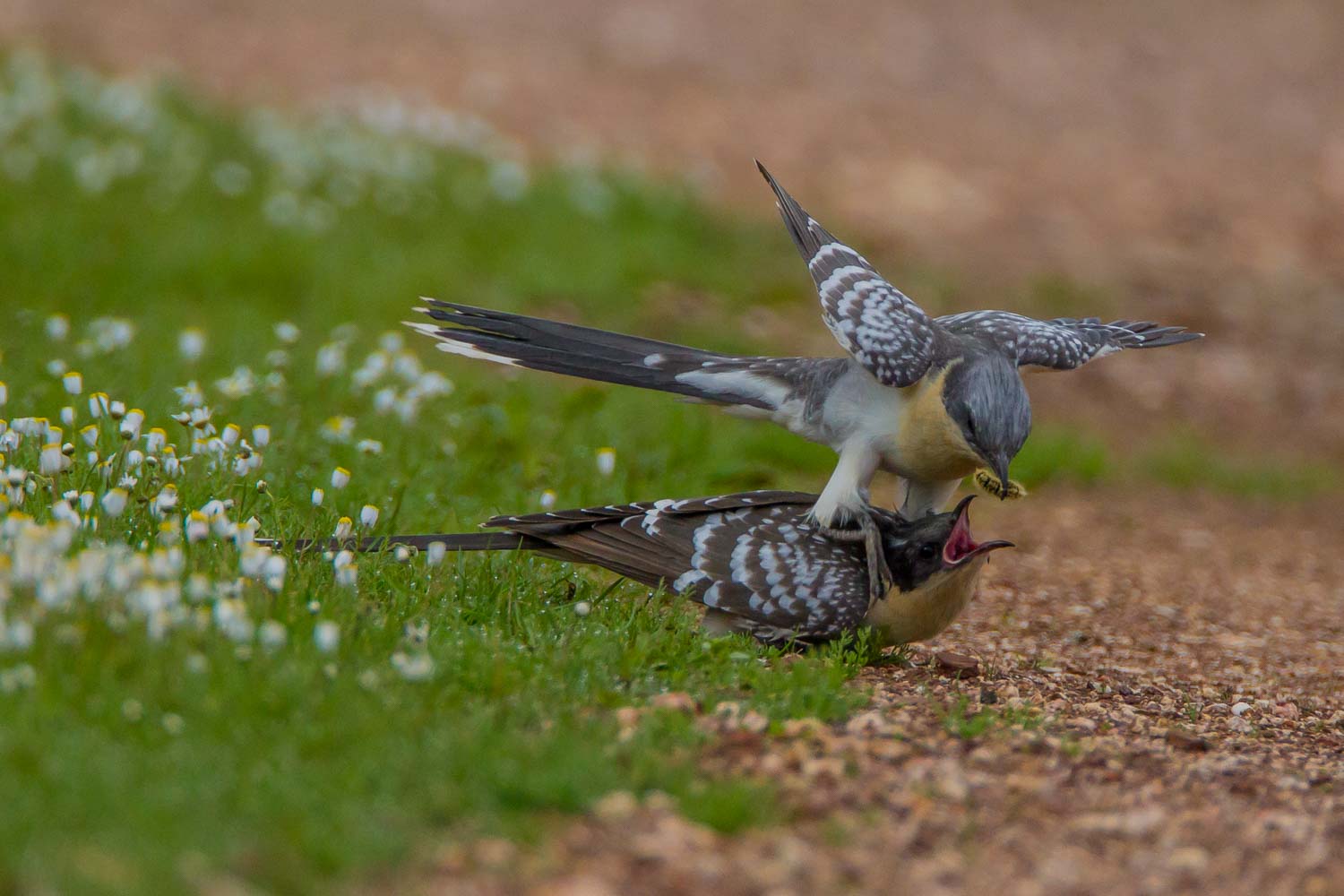
Mating Great Spotted Cuckoos
In the greater scheme of things it is not a rare bird at all, though it is uncommon north of the Mediterranean as its geographical stronghold is south of the Sahara, and in most of its range it doesn’t even bother to migrate at all. Its range in Europe is restricted for the most part to the Iberian Peninsula with a small resident population along the southern coast, so if you’re very lucky you can find them all year round in the Algarve.
As with the more widely recognized Common Cuckoo, (Cuculus canorus), it is a brood parasite, (i.e. it relies upon another species to raise its young), but unlike the Common Cuckoo, which has a broad range of hosts, in Europe the Great Spotted almost exclusively targets Common Magpies, (Pica pica), and the recent expansion of this Magpie in southern Europe is helping in the expansion of the Great Spotted too – as with all things Nature, these things are inter-connected even if we humans have yet to figure out the whys and wherefores.
However, its migration strategy is what makes the Great Spotted Cuckoo really stand out from the crowd, as it is pretty well the opposite of any other species that visits Europe.
Whereas other species head south for the winter, typically leaving the continent during September and October, the Great Spotted Cuckoo arrives back here from Africa during December and stays till June when the adults head south again, followed by the juveniles a month or so later.
Of course one could easily dismiss this with a throw-away, “Surely they’re tied to the breeding cycle of their host species”, but this doesn’t cut the mustard; Common Magpies breed at the same time as the myriad host species’ of the Common Cuckoo, which has a “Spring/Autumn” migration pattern, so why the four month aberration for the Great Spotted?
I am not so much of a bird-nut that the question keeps me awake at nights, but it is an intriguing mystery and one day I hope that someone will tell me the answer.
Despite the sterling work being carried out throughout the world by organisations such as the BTO, (British Trust for Ornithology), and SPEA, (Sociedade Portuguesa para o Estudo das Aves), and despite the leaps in knowledge that have been achieved over the last fifty years, the answer to this question awaits discovery!
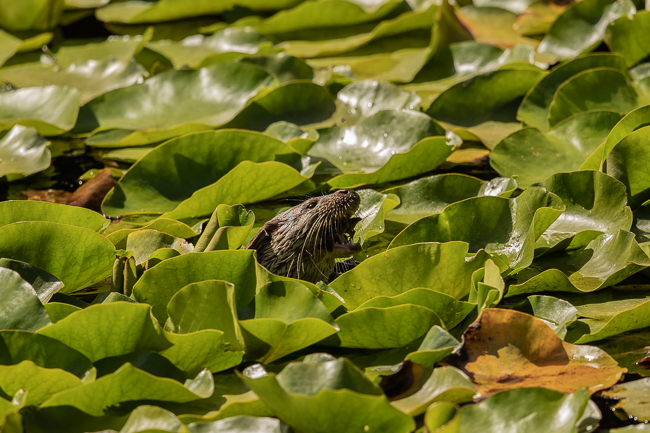
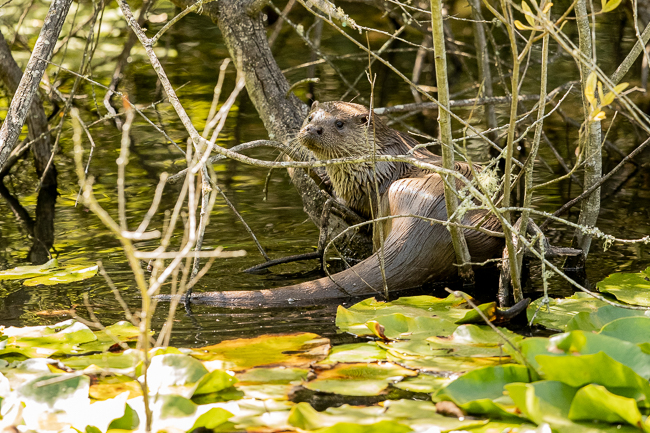
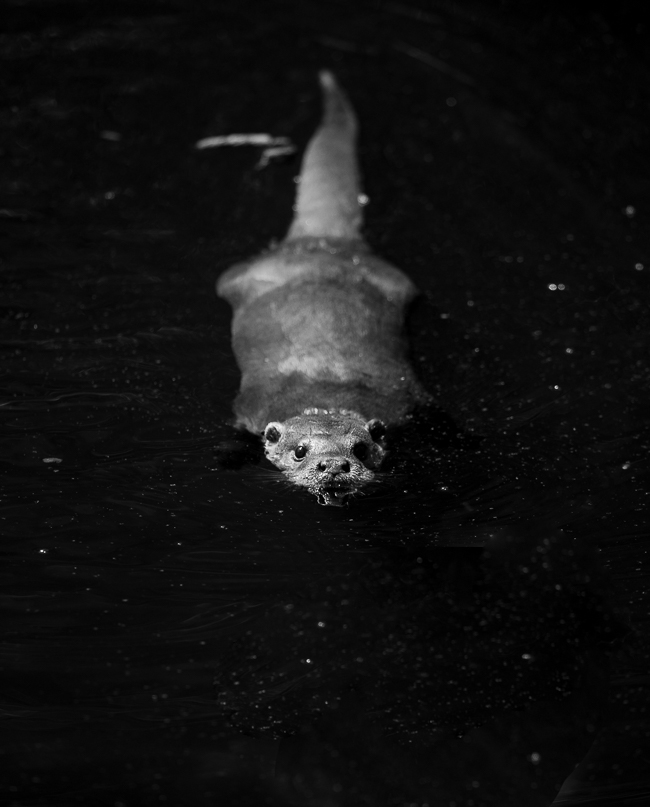
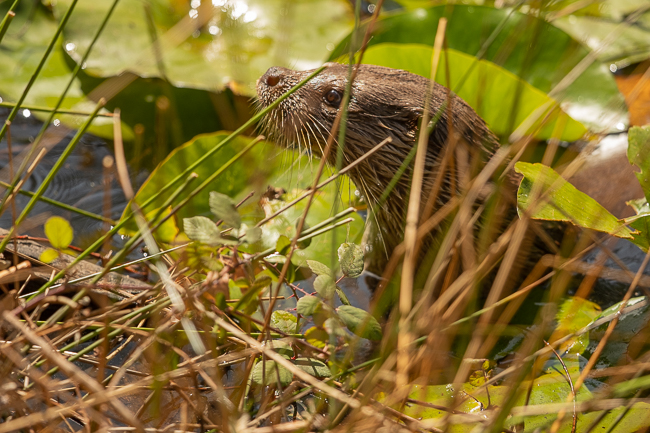

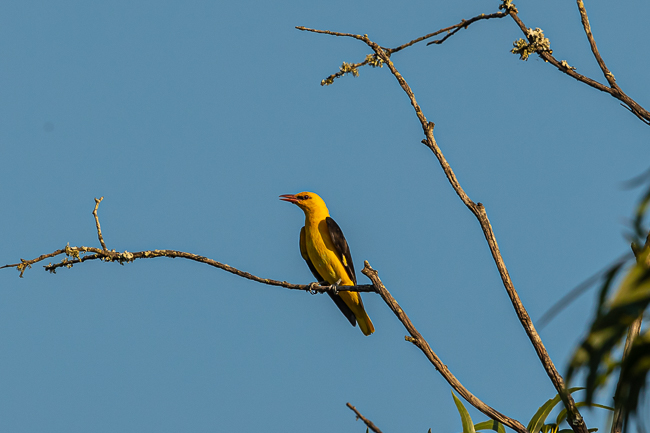
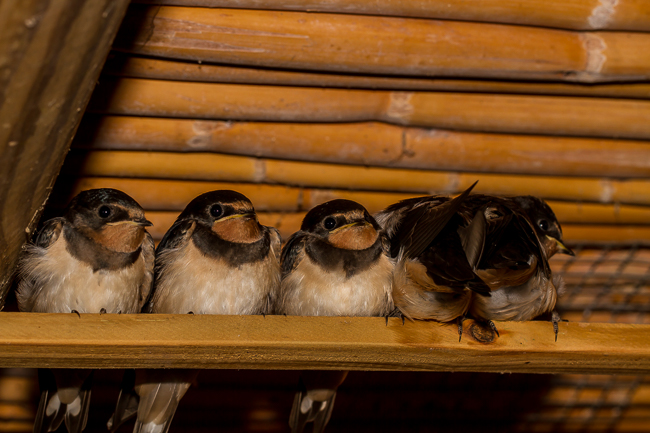
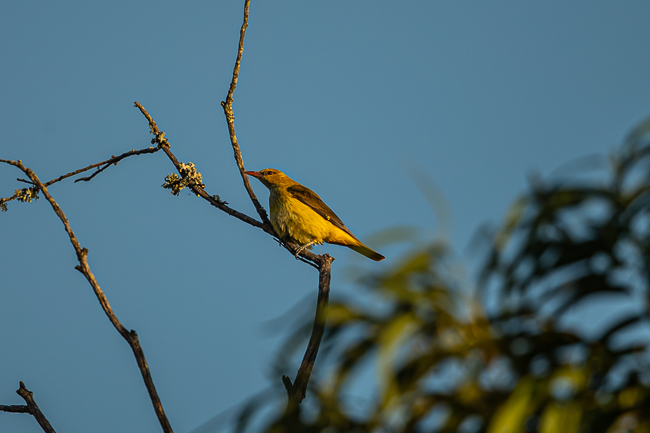
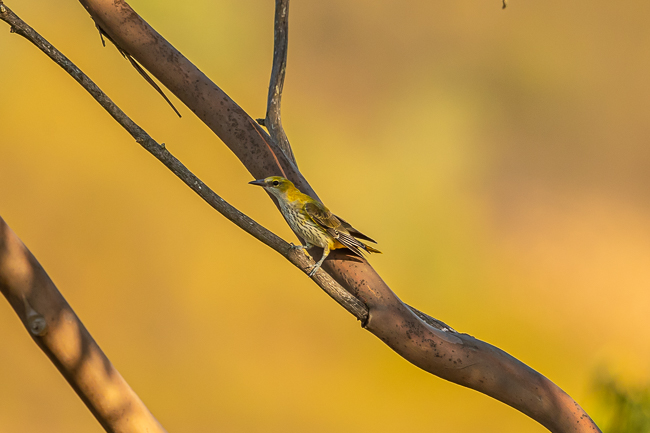
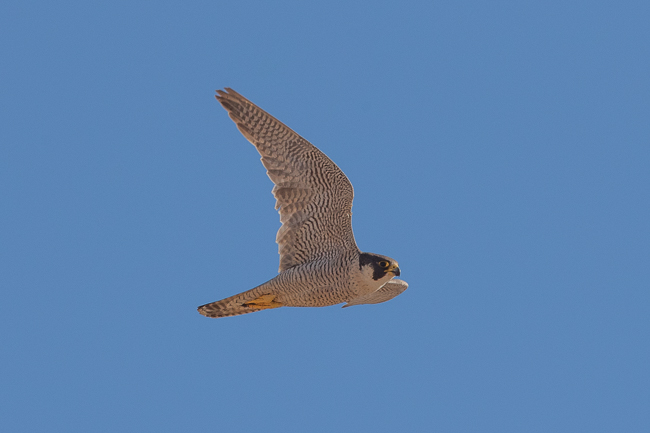 Peregrine Falcon (Falco peregrinus)
Peregrine Falcon (Falco peregrinus)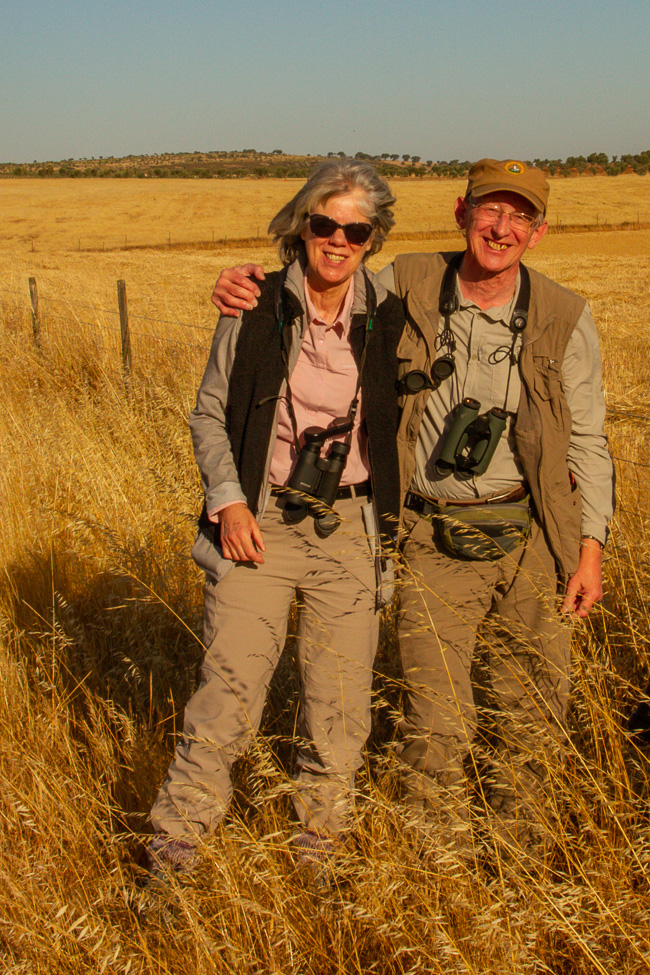
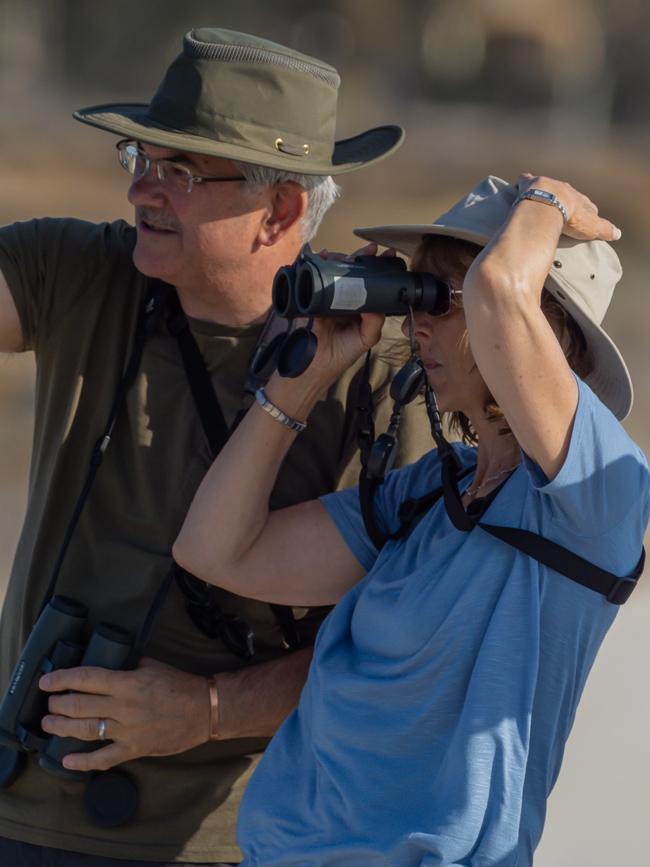
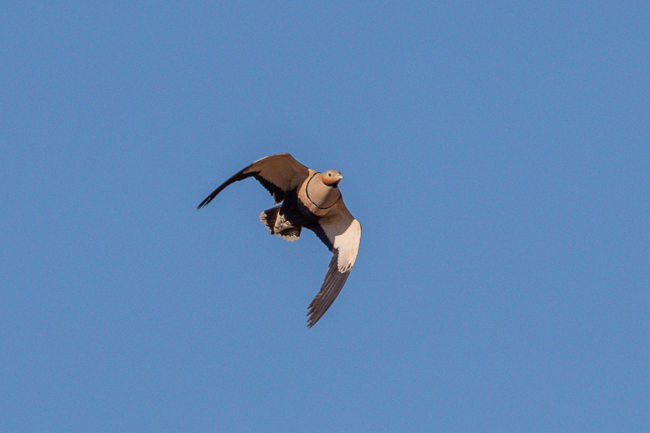 Black-bellied Sandgrouse (Pterocles orientalis)
Black-bellied Sandgrouse (Pterocles orientalis)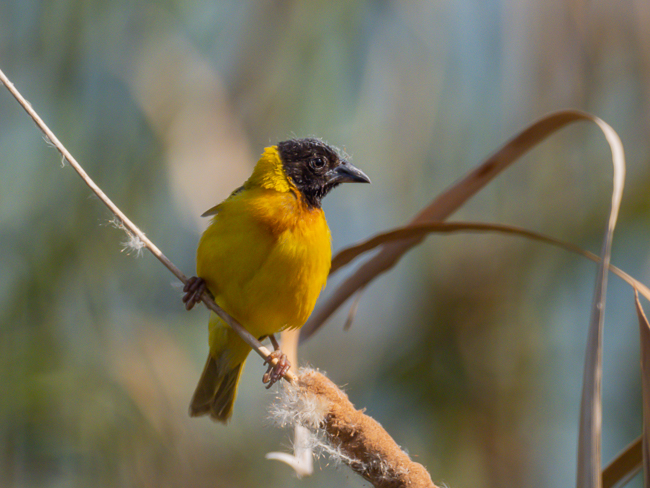 Black-headed Weaver (Ploceus melanocephalus)
Black-headed Weaver (Ploceus melanocephalus)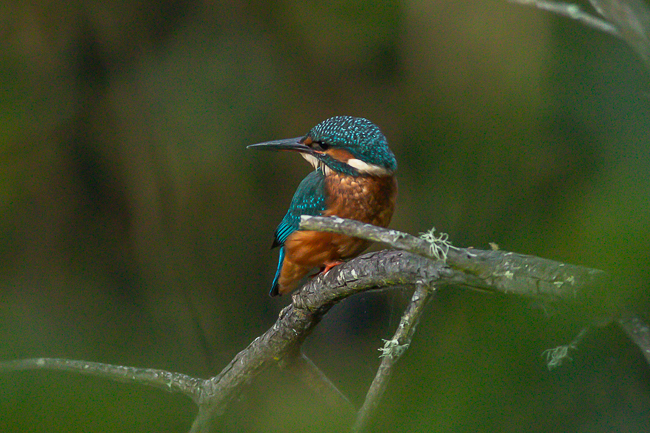 Common Kingfisher (Alcedo atthis)
Common Kingfisher (Alcedo atthis)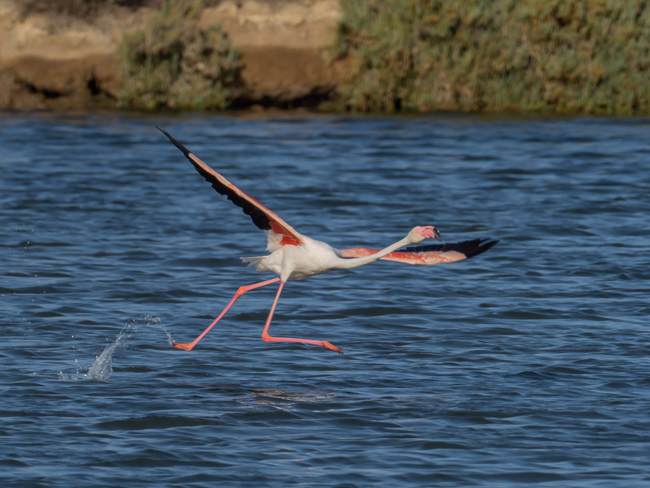 Greater Flamingo (Phoenicopterus roseus)
Greater Flamingo (Phoenicopterus roseus)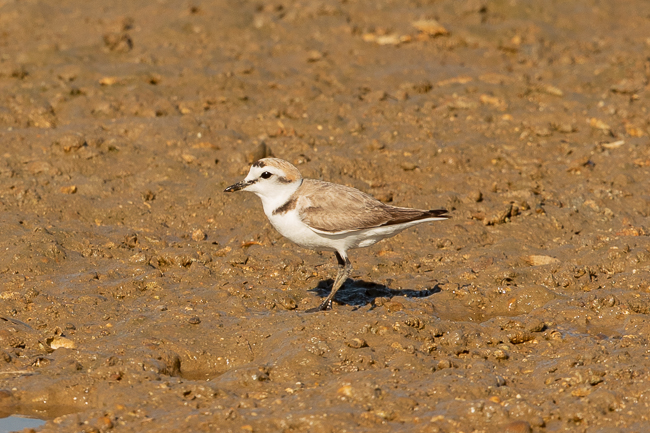 Kentish Plover (Charadrius alexandrinus)
Kentish Plover (Charadrius alexandrinus)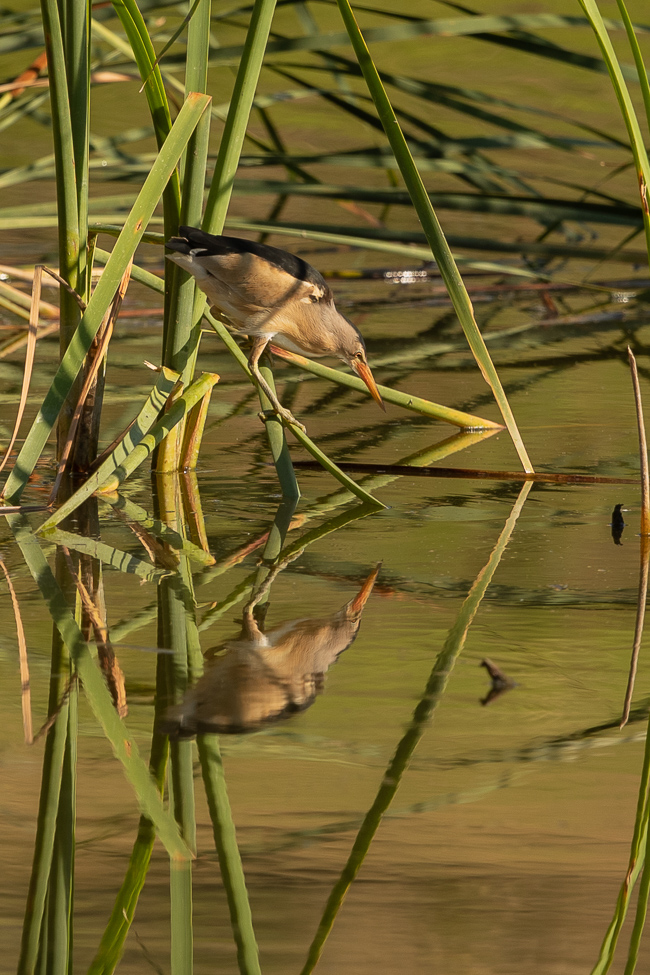 Little Bittern (Ixobrychus minutus)
Little Bittern (Ixobrychus minutus)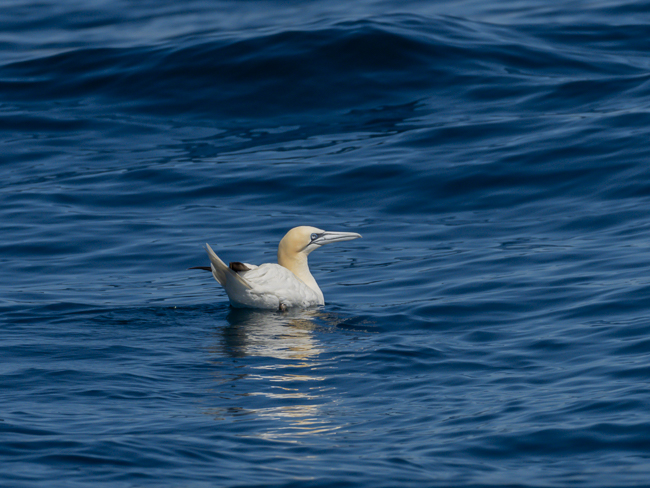 Northern Gannet (Morus bassanus)
Northern Gannet (Morus bassanus)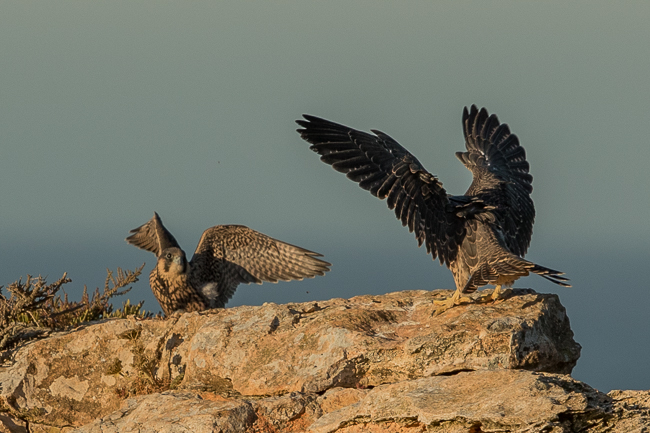 Peregrine Falcon (Falco peregrinus)
Peregrine Falcon (Falco peregrinus)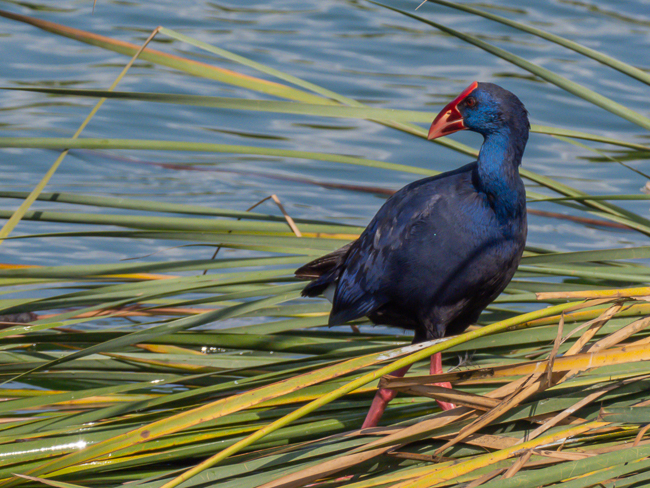 Purple Swamphen (Porphyrio porphyrio)
Purple Swamphen (Porphyrio porphyrio)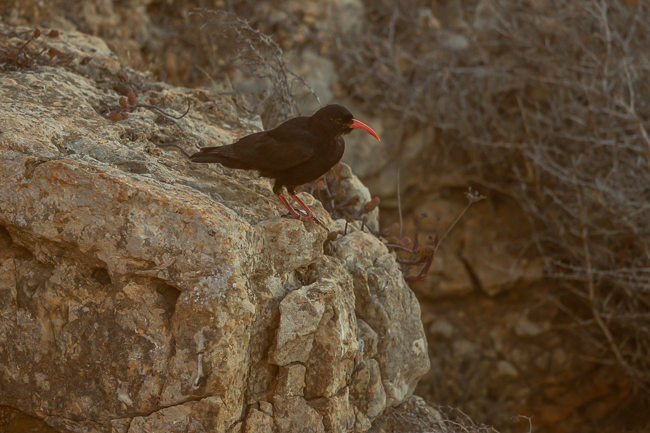 Red-billed Chough (Pyrrhocorax pyrrhocorax)
Red-billed Chough (Pyrrhocorax pyrrhocorax)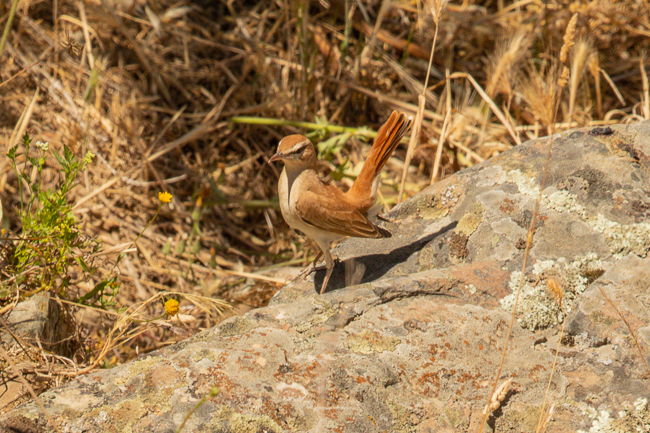 Rufous Bush Robin (Cercotrichas galactotes)
Rufous Bush Robin (Cercotrichas galactotes)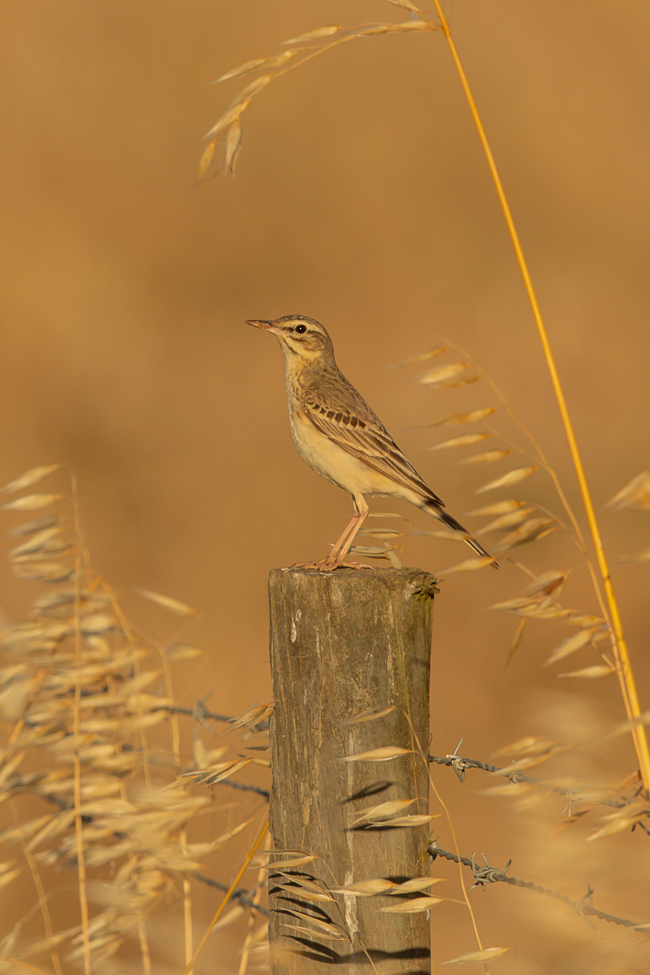 Tawny Pipit (Anthus campestris)
Tawny Pipit (Anthus campestris)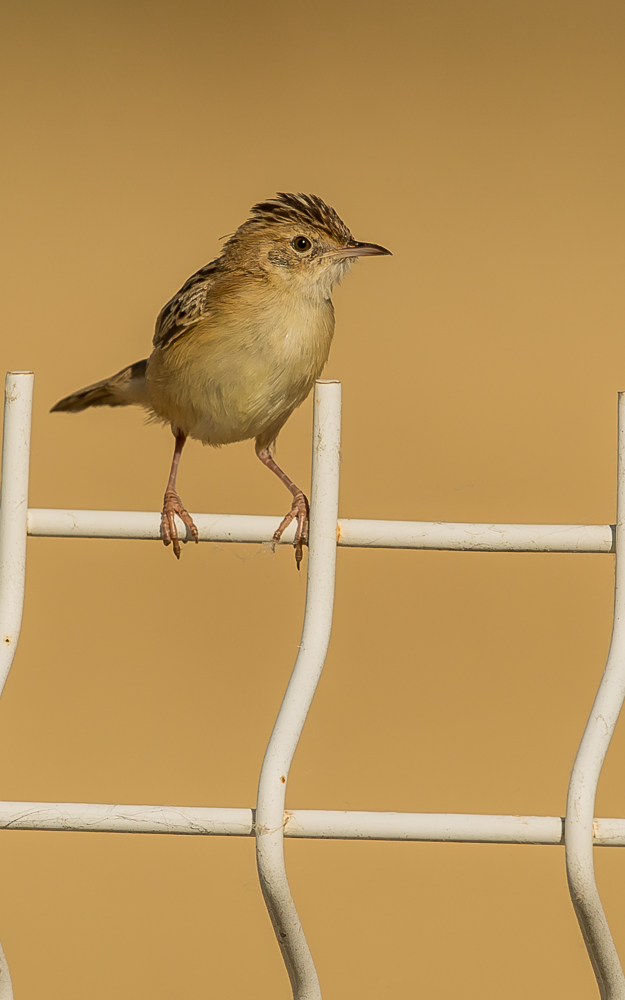 Zitting Cisticola (Cisticola juncidis)
Zitting Cisticola (Cisticola juncidis)